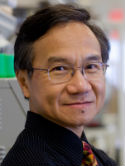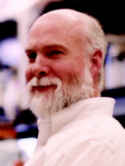| Abstract: |
The coexistence of neuroblastic and Schwannian stromal (SS) cells in differentiating neuroblastoma (NB), and derivation of Schwannian-like cells from neuroblastic clones in vitro, were accepted previously as evidence of a common pluripotent tumor stem line. This paradigm was challenged when SS cells were suggested to be reactive in nature. The advent of microdissection techniques, PCR-based allelic analysis, and in situ fluorescent cytometry made possible the analysis of pure cell populations in fresh surgical specimens, allowing unequivocal determination of clonal origins of various cell subtypes. To overcome the complexity and heterogeneity of three-dimensional tissue structure, we used: (a) Laser-Capture Microdissection to obtain histologically homogeneous cell subtype populations for allelotype analysis at chromosomes 1p36, 11q23, 14q32, and 17q and study of MYCN copy number; (b) multiparametric analysis by Laser-Scanning Cytometry of morphology, DNA content, and immunophenotype of intact cells from touch imprints: and (c) bicolor fluorescence in situ hybridization on touch imprints from manually microdissected neuroblast and stroma-rich areas. Histologically distinct SS and neuroblastic cells isolated by Laser-Capture Microdissection had the same genetic composition in 27 of 28 NB analyzed by allelic imbalance and gene copy number. In all 20 cases studied by Laser-Scanning Cytometry, SS cells identified by morphology and S-100 immunostaining had identical DNA content and GD2-staining pattern as their neuroblastic counterparts. In 7 cases, fluorescence in situ hybridization demonstrated the same chromosomal makeup for SS and neuroblastic cells. These results provide unequivocal evidence that neuroblastic and SS cells in NB are derived from genetically identical neoplastic cells and support the classical paradigm that NB arises from tumoral cells capable of development along multiple lineages. |







